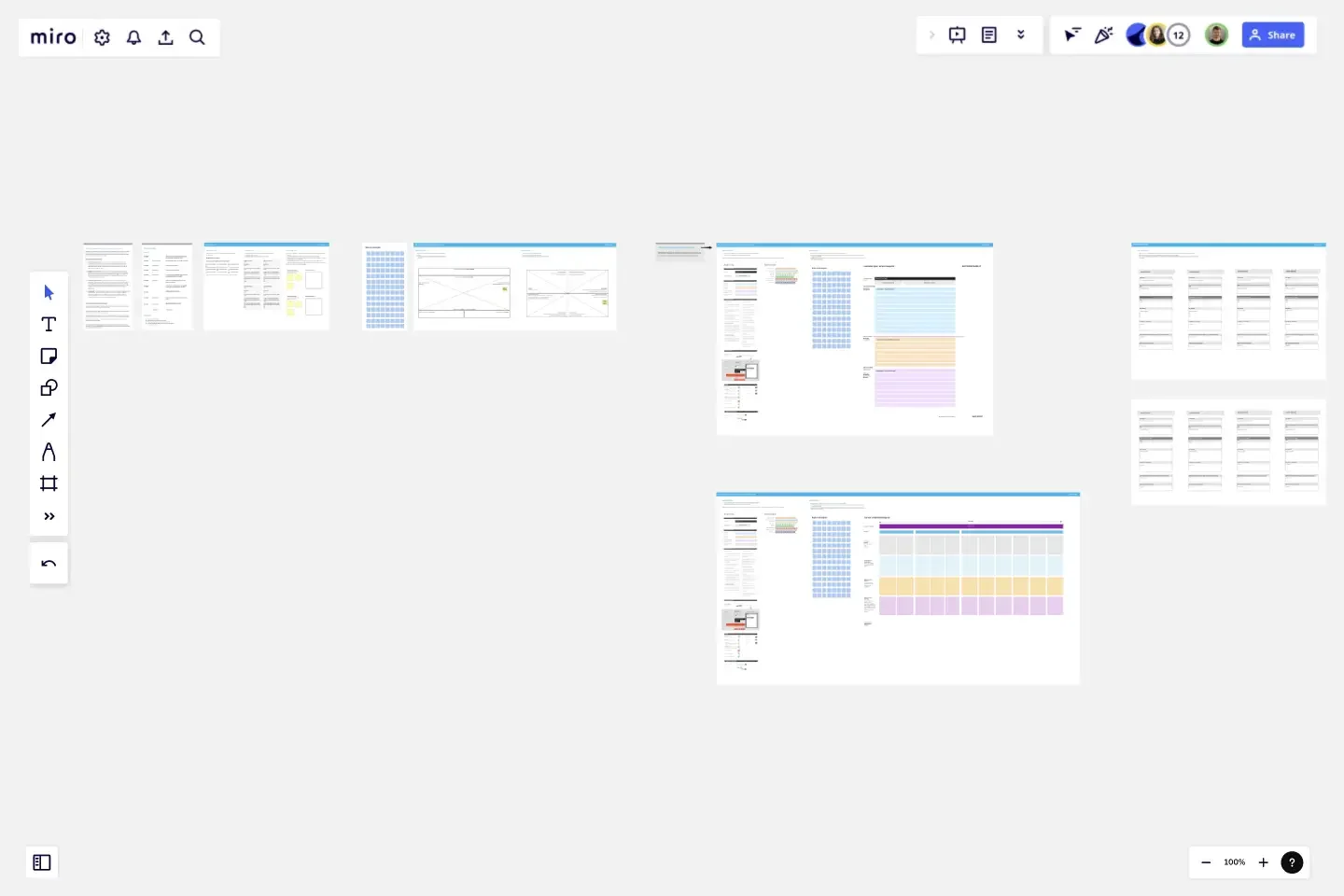Service Blueprinting Workshop
The focus of the board is to help your team build service blueprints together at varied depths of detail.
What is a blueprint?
A blueprint is an operational tool that visualizes the components of a service in enough detail to analyze, implement, and improve it. Blueprints show the orchestration of people, touchpoints, processes, and technology both frontstage (what customers see) and backstage (what is behind the scenes).
We have built this template to help remote and dispersed teams build a picture of their current state or to be services. At Xero we have used this series of templates for over 180 hours of workshops in many countries with over 100 people participating - so we think it works well!
Included in this board are ice breaker activities, a context canvas, an empathy map, action plans (a concept we created to capture the service transitions needed to change from current state, to to-be state) and a workshop feedback matrix. We’ve included two bespoke service blueprint templates, one simplified and one more detailed so pick the template that best works for you!
Key reasons to use a blueprint
Visual and transparent - Visualising services through blueprints helps us to understand all the moving parts —their interconnections, dependencies and relationships to products. Visually communicating this knowledge to collaborators and stakeholders takes what was an abstract concept and make it tangible and easier for you to tell that story
Aligning end to end working cross-functionally - blueprints provide a common understanding of how your services are functioning. This is particularly valuable when teams, working groups (locally and globally) come together to deliver on a service vision. Blueprints help ensure that, once built the pieces of experience correctly fit together as intended.
Identifying opportunities - by having visibility of the people, processes and technology, it's very easy to identify what’s working well and what’s not. Blueprints can easily enable us to map how internal processes and procedures are causing pain to the customer and internally. By having this view, blueprints create a single roadmap across go-to-market streams to operate in experiences, not silos or departments.
Prototyping - Service blueprinting is a great process for quickly prototyping service delivery in low fidelity. Service blueprints can be used as canvases to capture insights and explore business feasibility and operational viability for different solutions. Blueprints can also be used as scripts to facilitate and visualise the customer flow and architecture of the service experience.
Level of zoom: helicopter to microscope
The blueprints are designed to be read at different levels of zoom– from a macro level, ‘helicopter’ view to a microscopic, detailed, view.
The helicopter view is enough information to outline the audience group, episode and steps they need to take to complete actions.The most-detailed, microscopic, view is at a touchpoint level. At this stage you can see specifically how a customer interacts with your product or service, the teams or people involved with that interaction and where it sits among the wider objective that the customer is trying to achieve.
The blueprints are living documents in Miro, they are digital in order to remain accurate. It's your responsibility to keep them this way so that they remain useful to us now and into the future.
This template was created by Xero.
Get started with this template right now.
4P Marketing Mix Template
Works best for:
Marketing, Brainstorming, Workshops
Product, Place, Promotions, and Price. Starting with this template (and those 4Ps) you can choose the best way to take your product or service to market. The secret is to create just the right mix—deciding how much each P needs in terms of investment, attention, and resources. That will help you build your strengths, adapt to the market, and collaborate with partners. And our tool is the perfect canvas to create your marketing mix and share with teams and across your organization.
Zoom Levels Template
The Zoom Level Template is a tool to examine a problem from various perspectives. For more innovative solutions, consider the issue broadly. Ascending the ladder enables you to broaden your perspective (ask, 'How might we?'). When confronted with an overly broad scope that hinders progress, descending the ladder helps narrow your focus (ask 'What if we narrowed?').
Service Experience Observation Sheet
Works best for:
Research & Design
The Expanded Service Blueprint provides a detailed view of your service processes and interactions. This template is ideal for comprehensive service analysis and improvement. Use it to align teams, visualize the customer journey, and identify opportunities for optimization. It's perfect for enhancing service delivery, fostering collaboration, and ensuring a seamless and efficient service experience for your customers.
Service Blueprint [Research]
Works best for:
Research & Design
A Service Blueprint is a diagram that displays the service's entire process, including people, objects, tasks, time, and processes.
Website Landing Page Wireframe Template
Works best for:
Wireframe, UX, Design
The Website Wireframe template equips you with everything needed to kickstart your next website or web page concept. Rather than starting from scratch, the template offers a ready-to-use, customizable layout for your designs. Change and rearrange the included pages and components to build the perfect wireframe for your project.
UX Research Repository Template
Works best for:
UX Design, User Experience
Empower your organization with customer knowledge and build a centralized research hub. From UX designers to product managers, enable everyone to get insights using the Research Repository Template.
